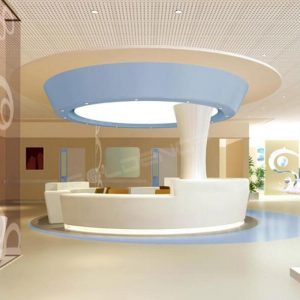Hospitals should be a safe haven for those who are sick, but the truth is that they are often hotspots for highly transmissible infectious diseases,
Design Choices That Reduce Disease Transmission

Infection control is one of the most important considerations for any hospital, as patients and staff both require a facility that is clean and safe. A hospital facility that is designed to support infection control makes the jobs of healthcare providers that much easier and, in many cases, may even save lives. A few of the ways architects can do this are through:
Antimicrobial Finishes and Materials. Easy-to-sanitize or naturally germ-resistant materials and finishes make it easier to maintain the high level of cleanliness necessary in a hospital environment. Copper, for instance, has natural antimicrobial properties and greater use in touch surfaces could reduce microbe transmission. Any material or finish used in a hospital setting should be nonporous and nonreactive when exposed to common disinfectants such as bleach, alcohol, and ammonium compounds.
Flexible Triage Areas. Open spaces situated close to the hospital entrance can act as pop-up triage areas during an outbreak. Equipping these areas with plumbing and electrical access makes it possible to set up basic equipment to perform triage functions. Low-acuity patients can be sent to one area, highly contagious patients may be placed in negative-pressure isolation rooms, and patients needing immediate care can be taken to the emergency department.
Thoughtful Air Management Systems. Natural ventilation and high-level filtration systems should be designed to keep fresh air coming in while preventing airborne germs from being recirculated throughout the facility. Although isolation rooms are on a separate negative exhaust system, consideration should be given to further isolate ICUs and Nursing Units on their own systems. Increasing the number of isolation rooms per unit can further control containment on a unit. The ability to control humidity is also important, as a humid environment can reduce the transmission rate of some microbes.
